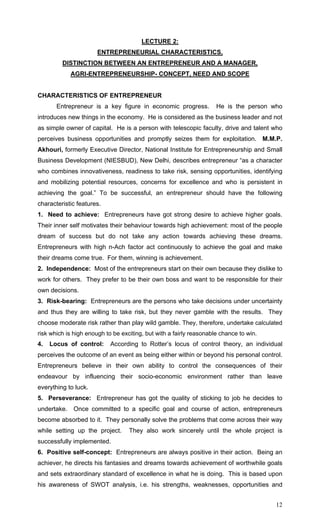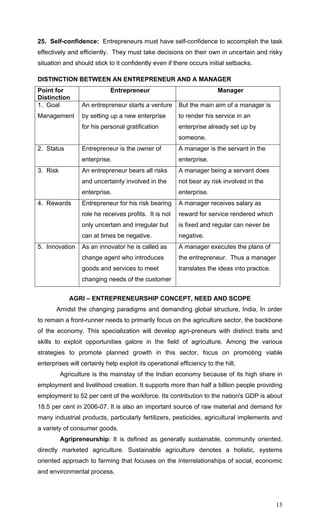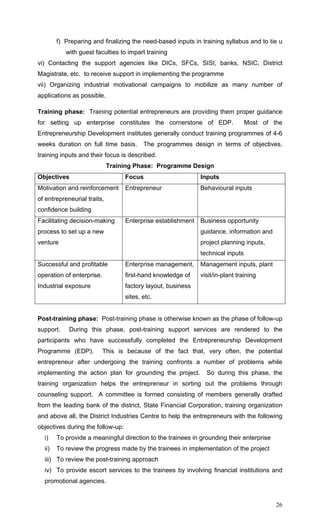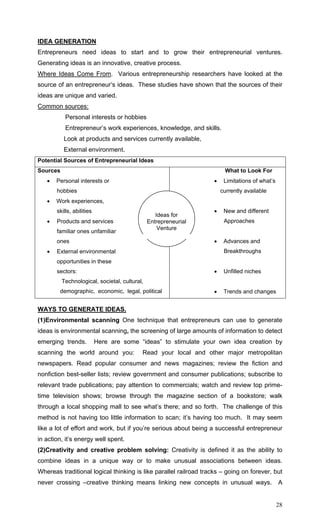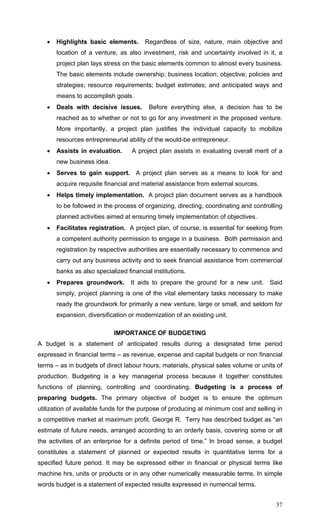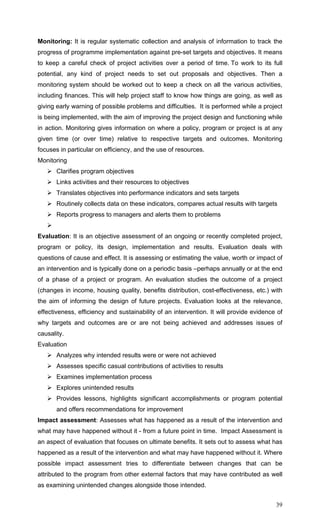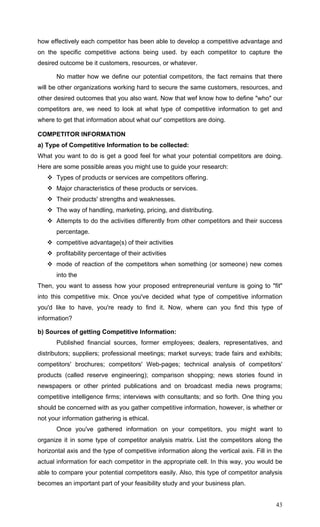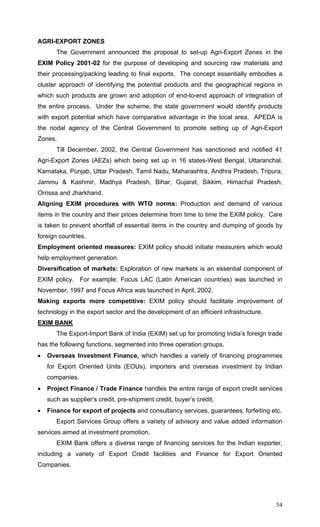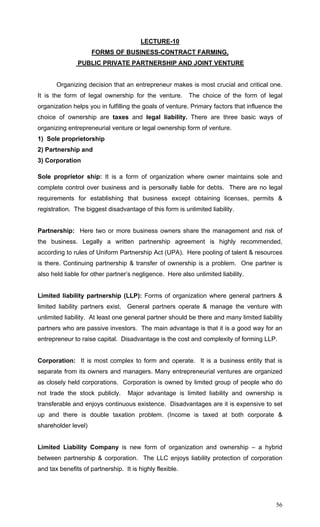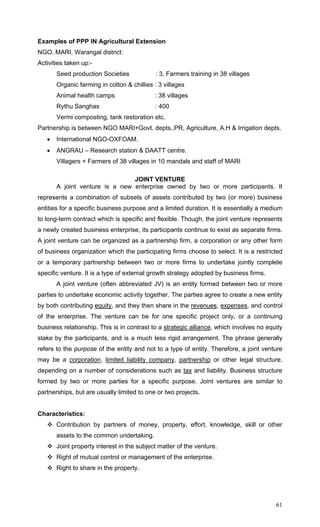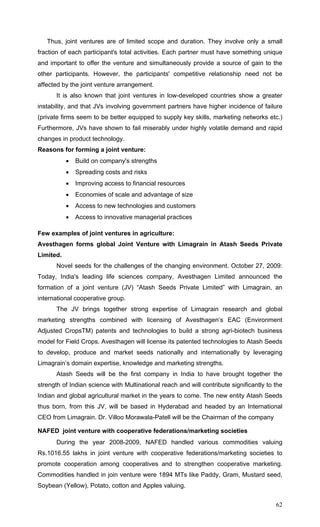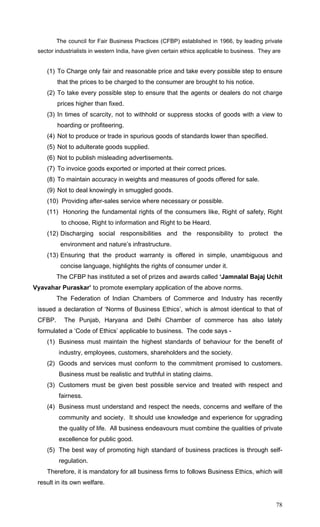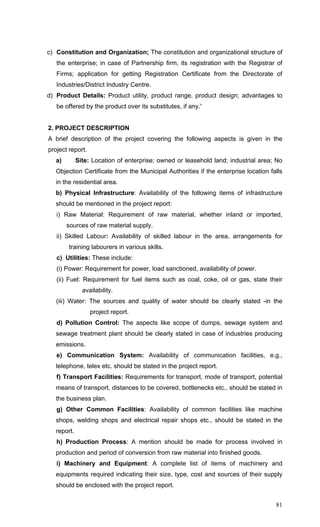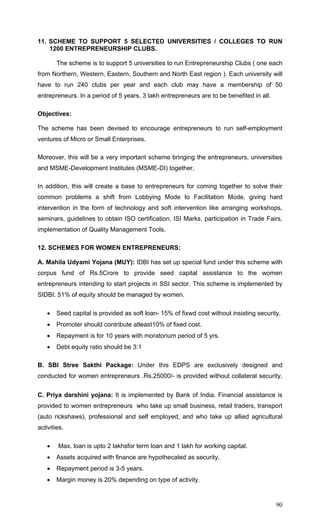The document provides information on entrepreneurship development as a course at Acharya N.G. Ranga Agricultural University.
It begins with an introduction and objectives of the course. It then outlines the theory and practical lecture topics that will be covered, which include concepts of entrepreneurship, developing business plans, government support programs, agribusiness models, and skills like communication and project development.
Reference materials are also listed to provide additional resources for students. The document serves as a guide for instructors and students on the content and structure of the entrepreneurship development program.











